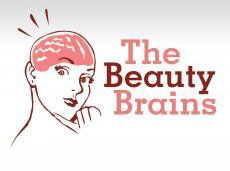Katy has cause for concern: I have clusters of dry, red raised bumps on either side of my chin. I’ve been using hydrocortisone that helps but doesn’t cure them. I also have a flush to my cheeks and am prone to blushing, which are two characteristics of Rosacea. Does this sound like Rosacea and do you know of any better remedies Hydrocortisone?
The Right Brain rambles on Rosacea:
Katy, based on your description you might have a form of Rosacea but you really should really check with a dermatologist for the best course of treatment. Your question prompted us to include Rosacea in our Cosmetic Diseases and Disorders Series so everyone gains a better understanding of this condition. Hopefully you’ll find this information helpful.
What is Rosacea?
Rosacea is an inflammatory skin condition that causes the skin around your nose, cheeks, chin and eyes to become very red and flushed. Over 14 million Americans suffer from this neurovascular disorder, according to the National Rosacea Society. Why is this such a disturbing disorder? Because it’s more than just a simple case of being red-faced! The condition has psychological effects as well. The Society has done studies that show nearly 70 percent of Rosacea sufferers have lowered self-esteem, and 41 percent say that the condition causes them to avoid public contact or cancel social engagements.
What causes Rosacea?
No one knows for sure but there are several theories. It could be related to how facial blood vessels cope with being flushed and dilated. Or, it could be that it’s an over active inflammatory response to some unknown pathogen. Though the exact cause is unknown, we do know that it can be worsened by harsh skin treatments, strong acne medications, and even exposure to excessive sunlight.
How can you tell if you have Rosacea?
Again, you should consult your dermatologist to find out if your condition really is Rosacea. But here are some common symptoms you can look for. The redness associated with Rosacea primarily occurs in the flushing zone, the nose, cheeks, chin and forehead. Besides the reddening, you may see dilated blood vessels and facial swelling. You may also feel a slight burning sensation on your face. Inflammatory papules and pustules (the red bumps you described?) may develop as well.
You should also note that Rosacea starts as mild episodes of facial blushing or flushing which can turn into a permanently red face over time.
There is a special type of Rosacea, known as Ocular Rosacea, that affects both the eye surface and eyelid. This condition can cause redness, dry eyes, redness, crusting and even loss of eyelashes.
What does Rosacea look like?
You can see for yourself by checking out these links, but some of these are a bit disturbing so use your discretion.
What can you do about Rosacea?
We didn’t find any reference to using hydrocortisone to fight Rosacea, but there are other medications that are used to control the redness and reduce the number of papules and pustules.
The most commonly used drugs are oral antibiotics and topical metronidazole. Isotretinoin (Accutane) has also been shown to work against severe papopustular rosacea because it physically shrinks sebaceous glands and it has potent anti-inflammatory properties. And there has been some discussion that topical application of a drug called Finacea may be a promising treatment as well. You’ll need a prescription form your doctor for all of these though.
There are some things you can do without a prescription: according to the experts, you should use a gentle cleansing regime to avoid aggravating the condition. So make sure you’re using a mild facial cleanser and not scrubbing too much! You should also limit sun exposure by protecting your skin with a good non-irritating sunscreen everyday. You might find a product that uses physical sunblock ingredients like zinc oxide or titanium dioxide might be less aggravating than some of the reactive sunscreens.
For much, much more on this subject, visit the Rosacea Support Group or the excellent Rosacea Blog.
